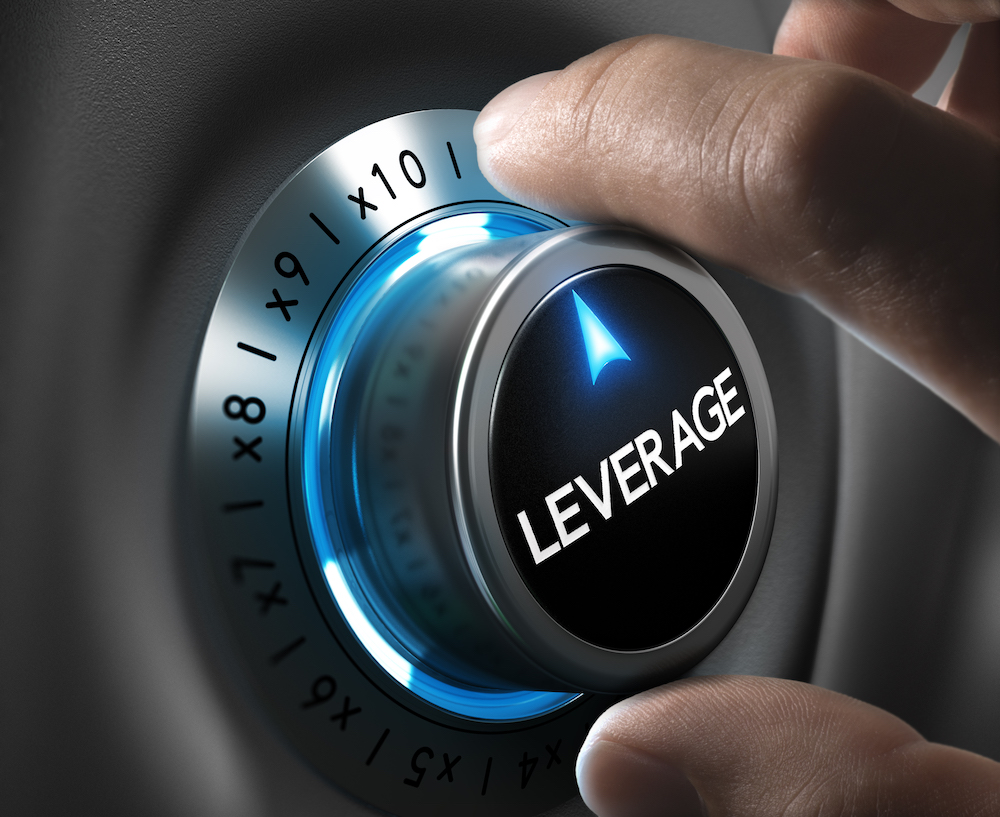 When starting out in the forex trading industry, a small concept with a big impact called leverage is a necessary tool for your personal strategies. It may seem like a complex concept at first, but once you grasp the broader benefit of it, you’ll be able to spot advantageous and higher levels of leverage when choosing an online forex broker.
When starting out in the forex trading industry, a small concept with a big impact called leverage is a necessary tool for your personal strategies. It may seem like a complex concept at first, but once you grasp the broader benefit of it, you’ll be able to spot advantageous and higher levels of leverage when choosing an online forex broker.
Leverage is a ratio amount used by traders that reflects the margin requirement for forex trading to which a broker will operate. Although it’s most commonly represented as a ratio, it can also be shown as a percentage or as odds. For example, it could be shown as 50 to 1, 50:1 or 2%. The leverage is essentially the amount of capital you will require in your account to trade with your chosen forex broker, and it can be used with other forex trading advice to improve trade strategies.
Using leverage to improve your trades
Each forex broker will have a different level of leverage available on its website. With some thorough searching, you can sift through the brokers that provide lower leverage to focus on those offering a higher level. To understand the use of leverage as part of popular forex advice and methods, you must be aware of both the benefits and the risks of using it and how to choose the right one for your trades.
The standard expected leverage is 50 to 1, but higher levels are available with many brokers. This leverage translates to being able to place a trade on $50 with only $1 of the money in your account. As a result of these ratios, small amounts in your account will still allow you to trade on significantly higher figures and increase the chance of high returns. This also means that the higher the amount in your account, the more you can trade on, and the higher the profits you’ll get if you are successful. $1,000 in your account, when traded wisely and strategically, can bring a return of $50,000.
Unfortunately, along with the outstanding potential leverage offers you, it brings some risks and downfalls. If you place a losing trade, you’ll miss out on the potentially high returns. There is also the risk that bad dealings could last until the margin closes and you are left with losses rather than profits. Luckily, traders can control leverage amounts as they see fit. If you are feeling unsure or are still new to this method, you can lower your leverage to avoid larger losses should the worst happen.
Understanding a margin closeout
By trading in forex with the use of leverage, you are essentially borrowing capital from your broker to make bigger trades. The amount of money in your account and the total deposit acts as collateral.
It is crucial to bear in mind that forex brokers will not allow your account’s total to drop below the minimum margin amount. There are minimum amounts required to use leverage in your forex trading. Forex brokers analyze the client’s account and will assign a Net Asset Value (NAV) to it based on the value of its open trades and history.
Should your open trading accounts lose their value at any time, your account balance runs the risk of being closed or cleared, whereby your broker will enforce a Margin Closeout on your accounts and limit your ability to sustain further trades. The Margin Closeout ends all currently open trades and stops you from creating additional risks and losses by adjusting the balance in your accounts. This may seem harsh, but it is the broker’s way of protecting your finances and trades to avoid crippling losses.